Jason’s Deli enters its 41st year operating on the same company principle it was founded upon: putting real value on customers’ plates by serving real, quality food.
By Katie Lee
On November 30, 1976, a small, low-slung “bowling alley” of a sandwich shop opened in Beaumont, Texas. No more than 2,200 square feet, with a traditional lunch counter, glass storefront and a straight line of seating, this new establishment was founded by Joe Tortorice, Jr., the son of Joe Tortorice, Sr., a local entrepreneur who owned several businesses around Beaumont. Joe Jr. had gotten his start helping his dad after school at his Fruitland Grocery Store and J’s BBQ & Washateria.
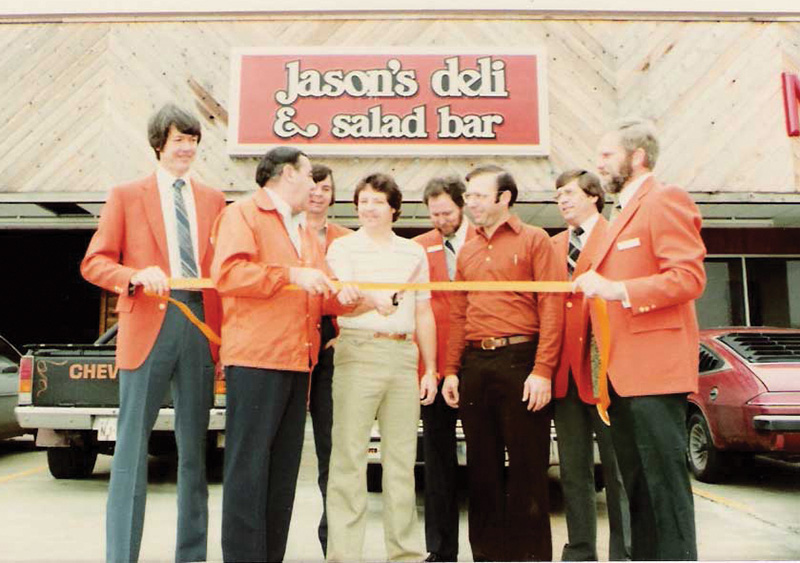 Joe Jr. had recently teamed with a shopping center owner who wanted to introduce a delicatessen to southeast Texas. He convinced Joe Jr. to develop and operate the new restaurant. The rest is sandwich history: Joe Jr. opened the first Jason’s Deli in 1976 in Beaumont’s Gateway Shopping City. (The name came from Joe Jr.’s first son Jay — “J”sons). Today the fast-casual chain has 266 stores in 28 states.
Joe Jr. had recently teamed with a shopping center owner who wanted to introduce a delicatessen to southeast Texas. He convinced Joe Jr. to develop and operate the new restaurant. The rest is sandwich history: Joe Jr. opened the first Jason’s Deli in 1976 in Beaumont’s Gateway Shopping City. (The name came from Joe Jr.’s first son Jay — “J”sons). Today the fast-casual chain has 266 stores in 28 states.
A bit of a throwback, Jason’s Deli was built on the premise of serving real food. Healthy food with high quality ingredients has been in Jason’s DNA since its inception in 1976. No MSGs, no artificial dyes and preservatives, no partially hydrogenated oils today. Just as the rise in popularity of “scientifically engineered” foods was trending, Jason’s Deli remained true to its commitment to real, simple food. And thus, added value for the customer — not added costs — was passed along: real food that was simple with affordable prices, and real food that added value to your health.
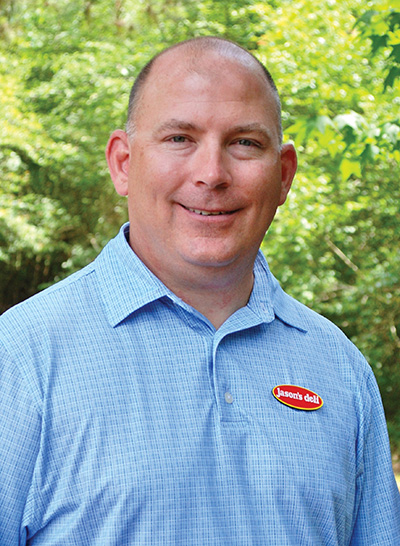 “Our grandparents and great-grandparents were cooking clean, healthy food,” says Wade Sterns, chief concept officer of Jason’s Deli. “We’ve tried to hold true to that. As we move into the next 40 years, it’s our goal to put value on the plate for our customers. We believe that’s where the rubber meets the road. If we can offer value to the customer, we’ll be a sustainable, great company.”
“Our grandparents and great-grandparents were cooking clean, healthy food,” says Wade Sterns, chief concept officer of Jason’s Deli. “We’ve tried to hold true to that. As we move into the next 40 years, it’s our goal to put value on the plate for our customers. We believe that’s where the rubber meets the road. If we can offer value to the customer, we’ll be a sustainable, great company.”
In 2005, Jason’s Deli was the first major restaurant concept to ban artificial trans fats in the U.S. and later became the first to eliminate high-fructose corn syrup. Since then the chain also has removed dyes (beginning with the kids’ menu in 2010), artificial flavors and artificial MSGs. While many fast-casual chains have since moved in this direction, Jason’s Deli was busy doing it back before it was cool. In 1980, the company’s famous salad bar was created and a partnership with the Heart Institute of St. Elizabeth Hospital was established to develop heart-healthy menu items.
As baby boomers age, physicians continue to emphasize the need for healthier eating. Young people, too, are demanding ‘true food’ and nothing less. Explains Sterns: “Baby boomers are getting older and trying to take care of themselves and improve the longevity of their life. And you’ve got Millennials that are more educated, kind of a throwback to our grandparents: ‘Wait a second, can’t we just get this food right out of the ground? Let’s make some good food here. Why do we have to add the scientific part?’”
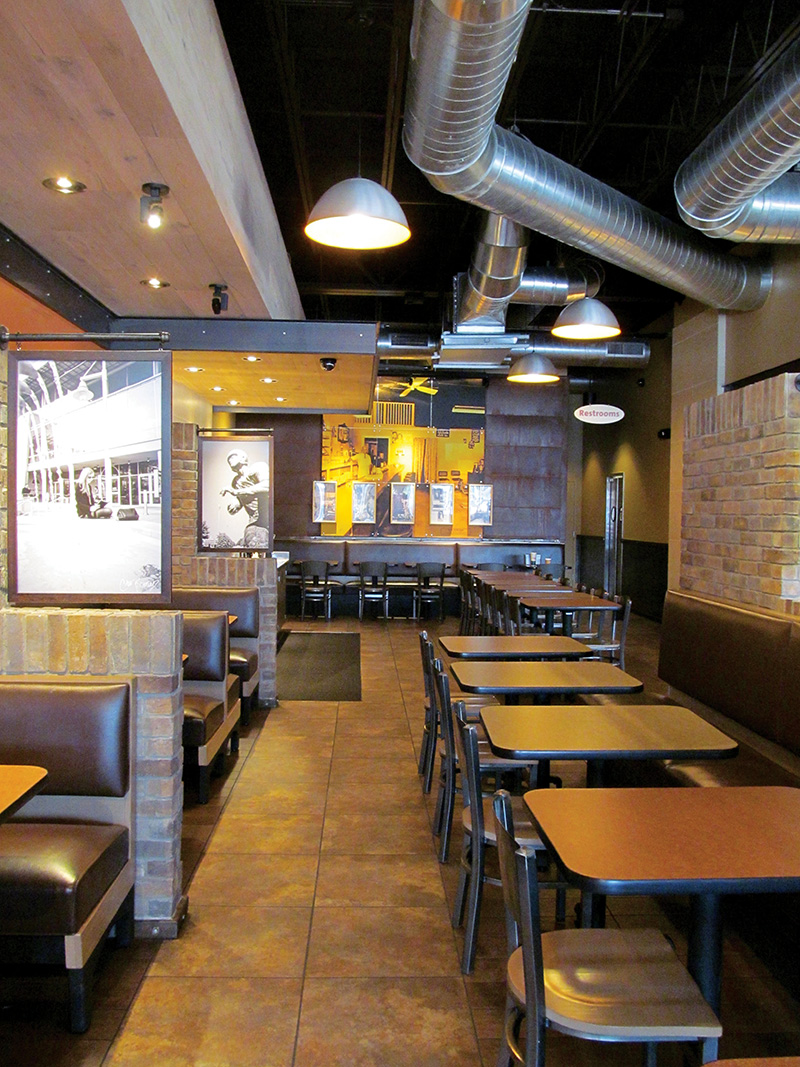 “We’ve always tried to stick to the ‘real’ — real food,” Sterns continues. “When we have a company make marinara sauce for us, we couldn’t understand why do you need red dye in marinara sauce? It’s tomatoes. So as we’ve grown and had to bring on more vendor partners, we’ve definitely had to challenge them on how to keep the food real and clean. Challenge them to not use trans fats, not use MSGs, not use dyes, and really focus on real food and what it takes to have that food and be sustainable. A lot of times it cuts down on shelf life, but we’ve got good enough systems to help manage that. We would rather serve great food than have food that has sustainable shelf life that’s not real food.”
“We’ve always tried to stick to the ‘real’ — real food,” Sterns continues. “When we have a company make marinara sauce for us, we couldn’t understand why do you need red dye in marinara sauce? It’s tomatoes. So as we’ve grown and had to bring on more vendor partners, we’ve definitely had to challenge them on how to keep the food real and clean. Challenge them to not use trans fats, not use MSGs, not use dyes, and really focus on real food and what it takes to have that food and be sustainable. A lot of times it cuts down on shelf life, but we’ve got good enough systems to help manage that. We would rather serve great food than have food that has sustainable shelf life that’s not real food.”
Along with its fresh food, Jason’s Deli prides itself on keeping its facilities crisp and clean. While some restaurants might look dated or dingy past the 40-year mark, Jason’s Deli keeps its facilities clean, fresh and simple.
“It starts with the facilities. Just like any restaurant or any household, we’ve got regimen on a daily, weekly, bi-shift basis to keep the facilities clean,” says Sterns. “That’s something we pride ourselves on. You want to make sure that your facility represents your brand, and we’ve got a clean, good brand and we want to have a clean facility for those customers to dine in.”
Every 10 years, each of Jason’s Deli’s 266 locations undergoes a refresh. The original location in Beaumont, Texas, has undergone countless décor changes and square footage additions over the years. In November 2016, the Beaumont location hosted a month-long 40th anniversary celebration that included the incorporation of a ‘memory wall’ of Jason’s Deli memorabilia and scrapbook images over the years, telling the history of the company’s humble origins.
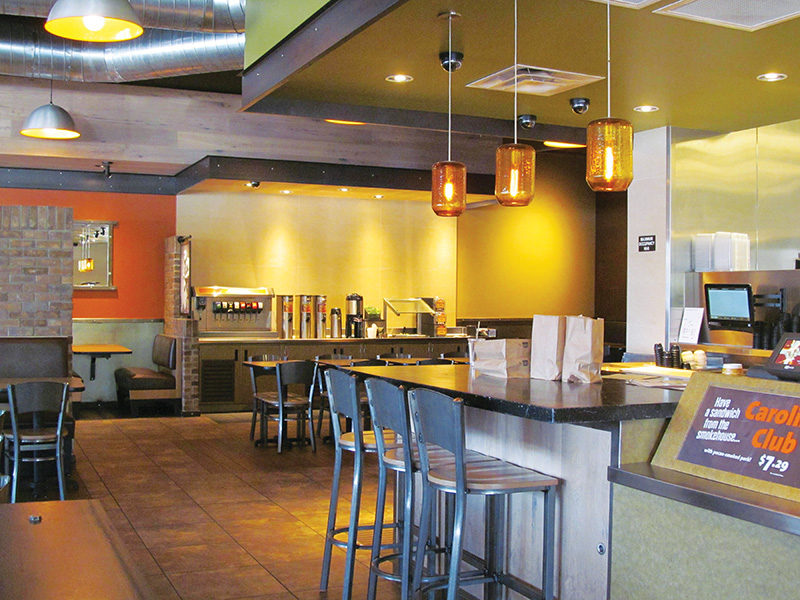 “The majority of the changes that we do to stay fresh on the facilities side have to do with customer user experience,” explains Sterns. “We do very little change to the back of house. When we bring in new products, we try to integrate them into the existing equipment that we’ve got.”
“The majority of the changes that we do to stay fresh on the facilities side have to do with customer user experience,” explains Sterns. “We do very little change to the back of house. When we bring in new products, we try to integrate them into the existing equipment that we’ve got.”
Again: simplifying its operations. Otherwise, the costs for fancy new equipment every year would be passed along to the customer — and that’s not how Jason’s Deli operates.
When it comes to technology, Jason’s Deli prefers to “stick with the basics.” It uses a POS system for internal food costing analysis and information sharing. However, Sterns says the company is always looking for equipment advances — advances that either save space or improve time.
“But yet are cost-effective,” he adds. “When you try to introduce a new piece of equipment that might be effective, it may come at a cost and we want to ensure that those costs aren’t just passed on to our customer.”
If a piece of equipment improves efficiency, can the company incorporate it and maintain its current cost? As an example: Jason’s Deli gives away free ice cream at all of its locations. When the craze in self-serve ice cream parlors began taking off, ice cream machine manufacturers migrated toward ice cream-only stores as their target customer. To satisfy this customer, the manufacturers dramatically improved the type of technology used in their ice cream machines. Some machines even send you an alert if your ice cream supply is low.
“Which may be effective for someone running an ice cream store, but that’s not what we’re doing,” explains Sterns. “We’ve been shopping around and finally found a company that has a basic model, but guess what? It puts out the exact same product, but it doesn’t have all the bells and whistles. Here’s where the industry went one direction, but we were able to dig in and find a machine that would work for us and we wouldn’t have to press our customers on menu price.” And keep the ice cream free. “Absolutely!” he says.
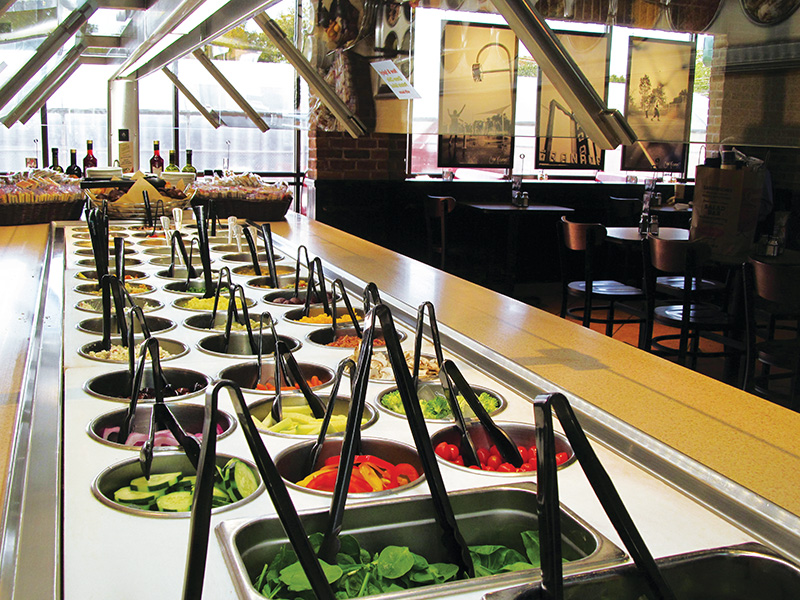 Today, most Jason’s Deli locations average 4,800 square feet in size. Some are freestanding and some even have drive-thrus. For the first 30 or 35 years, Sterns says the company focused mostly on inline locations. Over the last 7 or 8 years, however, the focus has shifted to convenience for the customer.
Today, most Jason’s Deli locations average 4,800 square feet in size. Some are freestanding and some even have drive-thrus. For the first 30 or 35 years, Sterns says the company focused mostly on inline locations. Over the last 7 or 8 years, however, the focus has shifted to convenience for the customer.
“We’re trying to offer that healthy option to someone who needs fast, convenient service but doesn’t want to come into the unit to get it,” says Sterns. “About 10 years ago, we began to put in freestanding units with pickup windows; you call ahead and pick up the food. That transitioned over time to today where we’re putting in full-service drive-thrus.”
In 2016, the privately-held company added six new corporate stores and three new franchise locations — a typical corporate-to-franchise ratio that the company likes. This year Jason’s Deli plans to open 10 corporate stores and four franchise stores. Also in 2016, the company was ranked Number 2 on QSR Magazine’s list of the most profitable restaurant chains in the U.S. The secret to its success?
“Fair value,” says Sterns. “We choose to leave as much value on the table for our customers as possible. We try to live our core values every day and be good leaders to our employees, many of whom have been with us for years. This last year we celebrated 20 employees who had been with us over 25 years. And that’s in the hourly range, as well as managers and corporate executives.”
Sterns continues: “We do our best to stay focused on our internal and external customers. We spend multiple days a week out in the field listening to our crews, walking alongside of them, looking for ways that we can build more effectively run stores that are more user-friendly for our internal customers, and therefore helps them bring value to our external customer. We’ve got thousands of employees working for us, and no great idea’s ever been generated out of an office. All the great ideas come out of the stores. We do our best to stay in there, and I really enjoy working alongside our employees and listening to them. Making sure that they understand they have a voice — that they’re part of something bigger.”
Sterns also understands the value of allowing store employees and managers the freedom to manage facilities contracts — not get bogged down in corporate red tape — and make more of the in-store decisions on their own. Currently, store repair and maintenance is handled at the store level, with managers contracting out trades like plumbing and HVAC to local vendors. A few contracts, such as floor matting, are handled nationally at the corporate level. But Sterns emphasizes the value created by vendor relationships cultivated on an individual basis, locally.
“In the next 10 years, we’re very focused on driving more of the decisions into the hands of the people that are running a location,” says Sterns. “Doing everything we can to not create bureaucracy for our operators. Obviously we have to establish some hash marks that they work between, but not creating the type of hierarchy that a lot of other companies have fallen victim to. You can sit in an office and have the right ideas and know the things that are going to happen, but at the end of the day where the rubber meets the road is in the store. And that manager or that employee that’s closest to touching that customer, that’s where the company’s run. Our goal is to continue to enhance that. Continue to break down any obstacles that might be there for those operators so that they can run their operations freely and efficiently. And continue to serve our customers a great product.”
— This article originally appeared as the cover story of the July 2017 issue of Retail & Restaurant Facility Business magazine. Email Editor Katie Lee at [email protected].
